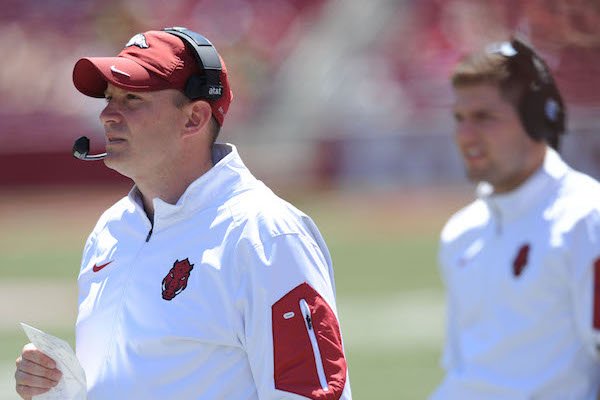There was a time not that long ago when college assistant coaches -- basketball or football -- were deemed not that important.
Most worked on one-year contracts for far less than the head coaches.
Perhaps that's one of the reasons so many had nomadic lives: They were always on the move in search of a $5,000-a-year raise and another check mark on their resumes.
Today, things are different.
A story in USA Today recently highlighted how much different when it listed the salaries of the best-paid assistant college football coaches and in a chart showed how much schools are spending on staffs, not including the head coach.
LSU was No. 1 at $5,781,500, but that was not all poured onto one coach. The Tigers' top-paid assistant was Dave Aranda at $1,315,000, which was fourth-highest in the nation.
The SEC had 13 of the 27 highest-paying schools, including four of the top five. Arkansas was No. 10 among SEC schools, at almost $3.9 million a year. There was no information available on Vanderbilt because it is a private school.
While the Razorbacks did not have one of the 12 assistant coaches making more than $1 million, defensive coordinator Robb Smith is paid $827,000, making him the 23rd-highest-paid assistant in the country. Dan Enos, the offensive coordinator, was 31st at $727,000.
The top three earners were Texas A&M defensive coordinator John Chavis at $1,558,000; Clemson defensive coordinator Brent Venables, the latest winner of the Broyles Award, at $1,431,250; and Alabama offensive coordinator Lane Kiffin at $1.4 million, giving the SEC three of the five top-paid assistant coaches.
The chart also revealed that LSU paid offensive coordinator Cam Cameron more than $1.2 million, though one of the first things new Coach Ed Orgeron did was let him know he wasn't being retained.
Of course, when assistants were lucky to make $75,000 a year, head coaches were not making $4 million-plus. They did have the luxury of multiyear contracts, something top assistants get now, with the average being three years guaranteed.
In this day of dump-truck loads of money piling up on the bigger schools, thanks to the SEC Network and other TV contracts, athletic directors are offering huge buyouts to coaches.
It cost Texas more than $19 million to fire Charlie Strong and his staff. Strong received the most, at a little more than $10 million, but assistants got some golden parachutes and the Longhorns had to buy Tom Herman out of his contract at Houston.
Les Miles walked away with $12 million.
It seems like a great business model for head coaches, but not so great for the schools.
One thing the firings of Miles and Strong have proved is that the talent pool for head coaches is shallow right now.
LSU promoted Orgeron from within, and Houston announced Friday that it was replacing Herman with offensive coordinator Major Applewhite, a former Texas quarterback and co-offensive coordinator.
Meanwhile, guys such as Venables, Chavis and Aranda don't seem to get a sniff of a head coaching job despite their great success. Kiffin shot himself in the foot at Tennessee and then again at USC, and getting fired by the Oakland Raiders during the 2008 season probably didn't help.
These days, though, being a career assistant means more than it ever has. The longer contracts and the kind of pay some schools only dream of paying their head coach mean job security. It may seem like a lot of money to teach a game, but that game usually pays the bulk of the bills.
Sports on 12/11/2016

